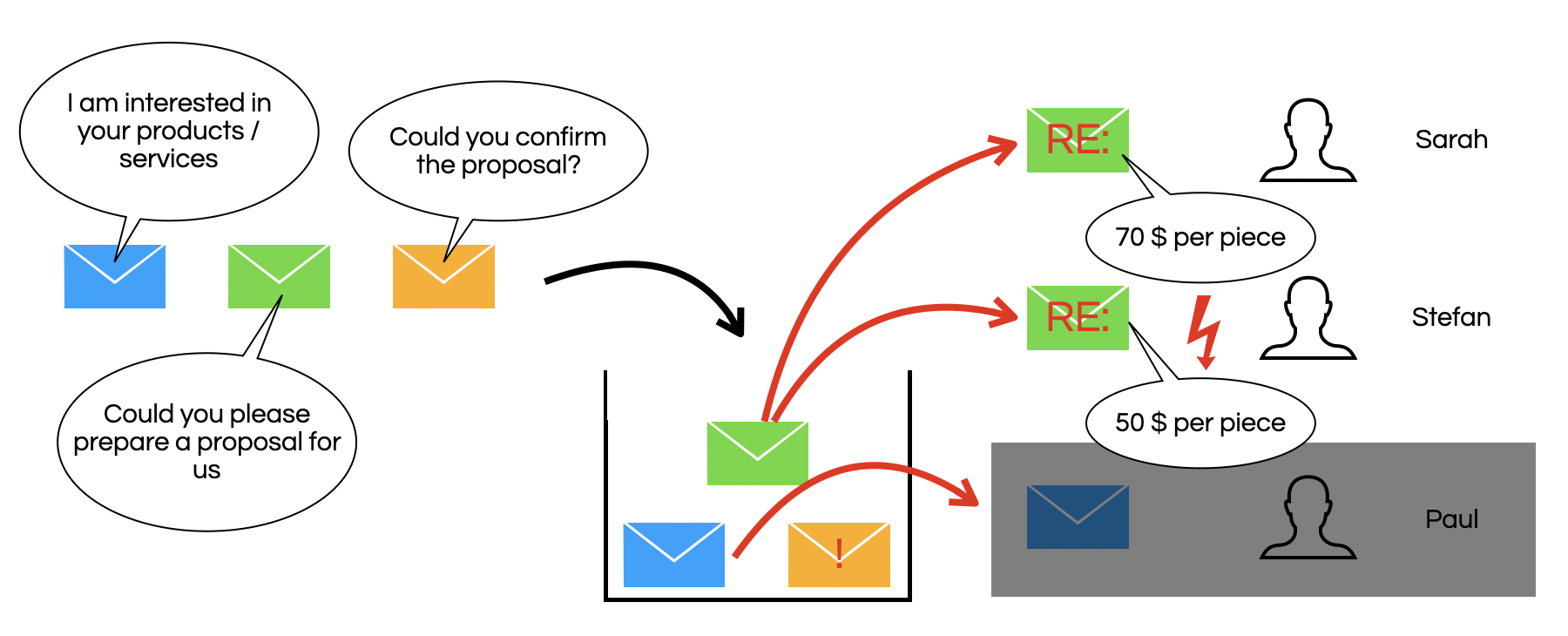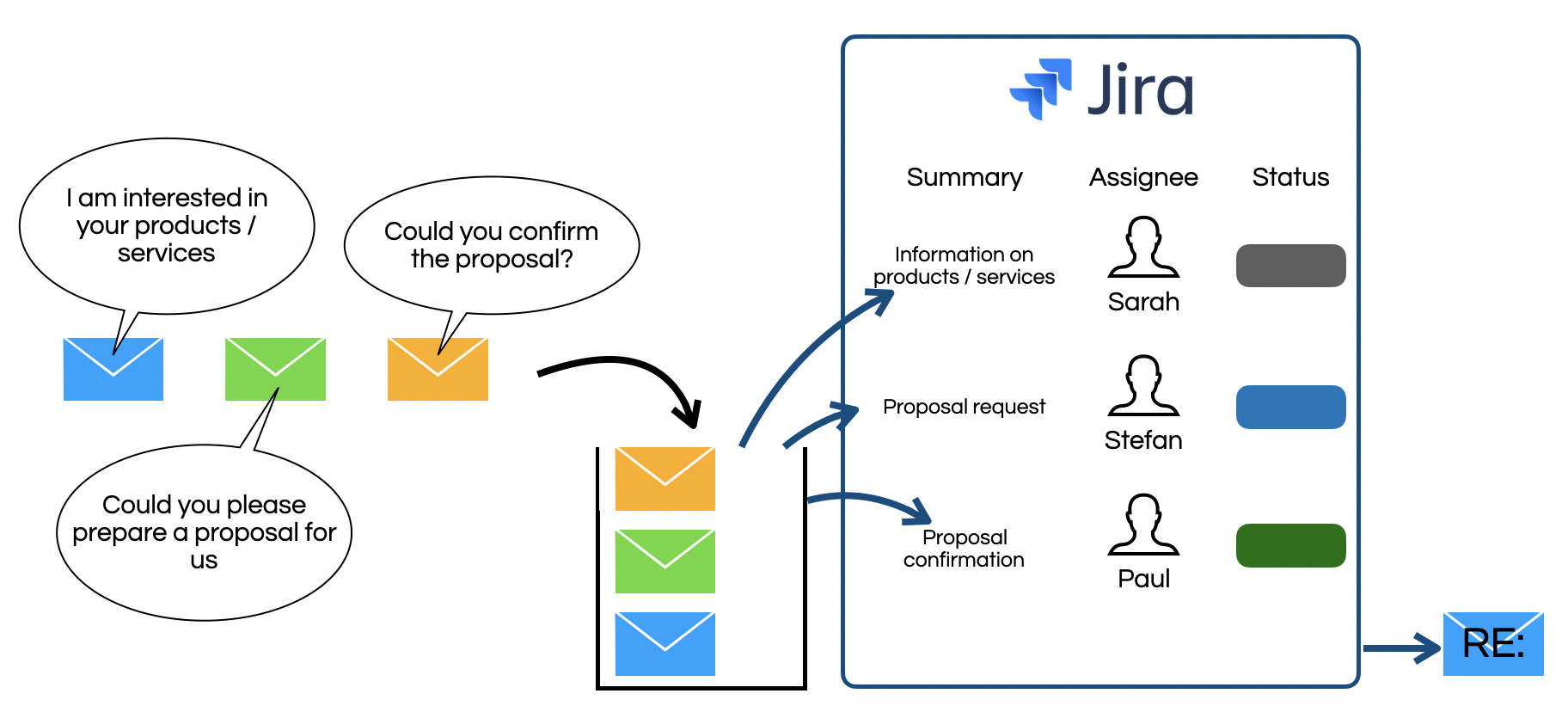In this post I explained that Jira could help to avoid mistakes, increase transparency and efficiency in business processes: Jira - more than a tool supporting project management for software development
I would like to go more in detail here and start with avoiding mistakes.
How could Jira help to avoid mistakes? As an example we look at the email communication with suppliers or customers. In many cases group- or department mail addresses as for example purchase@example.com or sales@example.com are used. External business partners can write to those addresses and several employees from the respective department have access to the mailbox to work on and answer those messages. The advantages of this procedure especially come with the case that employees need to substitue each other if someone is on sick leave or vacation. Other than for personal mail boxes, the correspondence remain transparent. At the same time you need to deal with the risk that two people reply to the same email simultaneously. Or no one replies as the responsibilities are maybe not clear or everybody thinks that a colleague will answer the mail. Maybe the first case isn't that problematic as the business partner, although several times, gets his answer. This may appear not highly professional but the requests are answered.
However, the second case is quite a bigger problem. The worst case is that business deals might be lost as the business partner don't get an answer to his request and maybe will contact a competitor or satisfy his demand in another way. The following image shows such cases.

The blue mail is answered by Paul who is on holiday afterwards. His colleagues don't know if and what he has answered. This could be a problem if it isn't transparent what has been communicated to business partners. The green mail is answered by Sarah and Stefan but with different price offers. This is a problem and could have a very negative effect on the business partner. Finally, the orange mail remains unanswered in the mailbox as no one feels responsible for this request.
How could a system like Jira help in such cases? As email is probably still the most commonly used way of communication especially across companies, we assume that the group-/department addresses are still in use. Jira could be used to automatically process those emails, create issues from them and document all communication with the business partner. The issues created from the emails are always assigned to only one distinct person. This assignement can been done manually or automated and it ensures that in all cases, each request is processed by only one person. The workflow status and comments in the issue indicate the current process state and what happened so far with the request. The following image displays how such a system with Jira could work.

In this case it can neither happen that mails get answered withouth the teammates knowing about it, nor it can happen that requests are answered twice. If something is left behind, it is immediately visible as the issue is either not assigend to anyone or the assignee can be contacted directly to ask about the current status of the issue.
So, Jira can help to avoid mistakes. However, the last example also shows that by using Jira, transparency within business processes can be increased. About this topic I would like to write in the next post. If you have questions or remarks regarding the topic of this post or if you are interested in a deeper discussion about it, feel free to write me to jonas@ij-solutions.com
